📞+86 153 7530 2641 📧 hongjing.Wang@feichuncables.com

Weather-Resistant H05VVH6-F Crane F Flat Cables: Highly Flexible Rubber Control Cables for Cable Trolleys, Elevators, and Harsh Environments
High-performance H05VVH6-F Crane F flat cables deliver weather resistance, low-temperature flexibility, and EMI shielding for cable trolleys, elevators, cranes, sewage treatment plants, steelworks, and high-rack facilities. Optimize space with flat rubber control cables—ideal for harsh industrial environments.
hongjing.Wang@Feichun
8/13/202514 min read




Introduction
In today's demanding industrial environments, the reliability and performance of electrical systems depend heavily on the quality of power and control cables used. Among the most challenging applications are mobile crane systems, cable trolley installations, and material handling equipment that operate in harsh outdoor conditions. These environments require cables that can withstand extreme weather conditions, maintain flexibility at low temperatures, and deliver consistent performance over extended periods.
Definition of H05VVH6-F Crane F Flat Cables
H05VVH6-F Crane F flat cables represent a specialized category of weather-resistant rubber control cables designed specifically for demanding industrial applications. The designation "H05VVH6-F" indicates a harmonized European cable standard that specifies a 300/500V rated cable with PVC insulation and weather-resistant rubber sheathing. The "F" suffix denotes the flat configuration, which provides significant space-saving advantages over traditional round cables while maintaining superior electrical and mechanical performance.
These cables are engineered with a flat profile that reduces space requirements in cable trolley systems, crane installations, and other applications where space optimization is critical. The weather-resistant rubber jacket ensures long-term durability in outdoor environments, while the flexible construction allows for continuous movement in dynamic applications.
Importance of Weather-Resistant, Flexible Control Cables in Industrial Systems
Modern industrial operations increasingly rely on automated systems and mobile equipment that demand reliable power and control cable solutions. Traditional round cables often present challenges in terms of space utilization, bending radius limitations, and environmental resistance. Weather-resistant, flexible control cables address these challenges by providing enhanced durability, improved space efficiency, and superior performance in harsh environmental conditions.
The importance of these specialized cables becomes evident when considering the cost implications of system downtime, maintenance requirements, and safety concerns associated with cable failures in critical industrial applications. By investing in high-quality, weather-resistant flat cables, facility operators can significantly reduce maintenance costs, improve system reliability, and enhance overall operational efficiency.
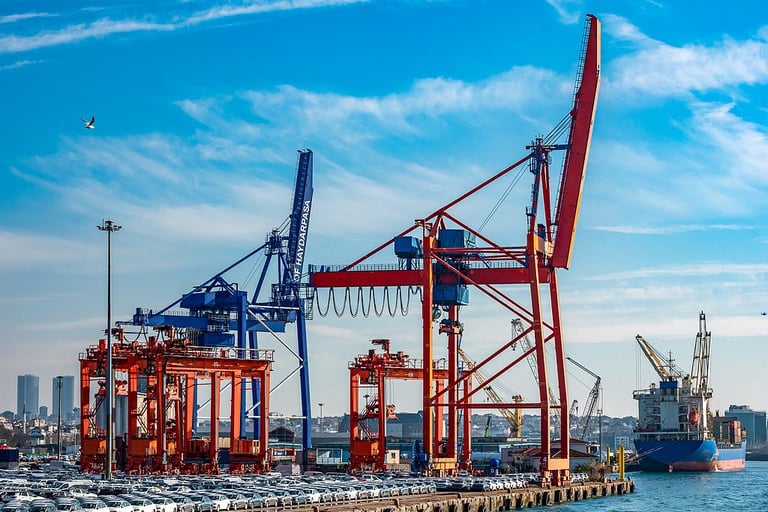

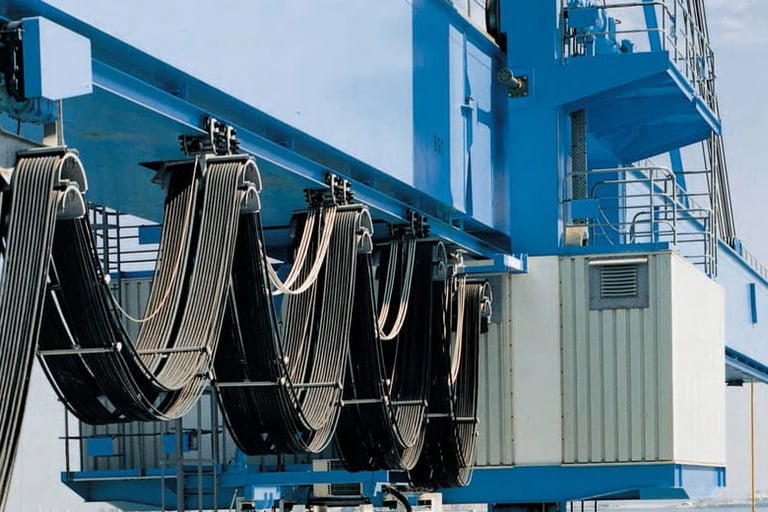

Key Features
Weather-Resistant Rubber Jacket
The primary distinguishing feature of H05VVH6-F Crane F flat cables is their weather-resistant rubber jacket, which provides exceptional protection against environmental factors that typically cause cable degradation. This specialized jacket material is formulated to resist UV radiation, ozone exposure, moisture ingress, and temperature fluctuations that are common in outdoor industrial environments.
The rubber compound used in these cables maintains its flexibility and protective properties across a wide temperature range, typically from -25°C to +70°C, ensuring consistent performance in diverse climatic conditions. This weather resistance is particularly crucial for crane systems operating on construction sites and shipyards, where cables are exposed to rain, snow, saltwater spray, and intense sunlight over extended periods.
Flat Profile for Space Efficiency
The flat cable design offers significant advantages over conventional round cables, particularly in applications where space is at a premium. The flat profile allows multiple cables to be bundled more efficiently, reducing the overall cross-sectional area required for cable routing. This space efficiency is especially valuable in cable trolley systems, elevator installations, and high-rack storage facilities where every inch of space matters.
Additionally, the flat configuration provides improved heat dissipation characteristics compared to round cables, as the increased surface area allows for better thermal management. This enhanced heat dissipation capability contributes to improved cable longevity and performance reliability in high-duty cycle applications.
Superior Flexibility at Low Temperatures
One of the most critical performance characteristics of H05VVH6-F Crane F flat cables is their ability to maintain flexibility at low temperatures. The specialized rubber compound used in the cable jacket is formulated to resist hardening and cracking in cold conditions, ensuring that the cable remains pliable and easy to handle even in sub-zero temperatures.
This low-temperature flexibility is essential for outdoor crane operations, material handling systems in cold storage facilities, and equipment operating in northern climates where temperatures can drop significantly below freezing. The maintained flexibility reduces the risk of cable damage during installation and operation, while also minimizing the force required for cable movement in dynamic applications.
Electromagnetic Interference Shielding via Copper Braiding
Many H05VVH6-F Crane F flat cable configurations incorporate copper braiding or screening to provide electromagnetic interference (EMI) shielding. This shielding is crucial in industrial environments where sensitive control systems must operate reliably in the presence of high-power electrical equipment, variable frequency drives, and other sources of electromagnetic interference.
The copper braiding provides a comprehensive shield around the cable cores, preventing external electromagnetic fields from inducing noise in control signals while also preventing the cable from radiating electromagnetic energy that could interfere with nearby equipment. This shielding capability is particularly important in automated material handling systems, crane control applications, and precision manufacturing environments.
Power & Control Cable Functionality
H05VVH6-F Crane F flat cables are designed to carry both power and control signals within a single cable assembly. This dual functionality eliminates the need for separate power and control cables, reducing installation complexity, material costs, and maintenance requirements. The cables can accommodate various combinations of power conductors and control circuits, allowing for customized configurations that meet specific application requirements.
The multi-core design typically includes larger cross-section conductors for power transmission and smaller gauge wires for control signals, all contained within the same flat cable assembly. This integrated approach simplifies cable management and reduces the overall cable volume required for complex industrial systems.
Key Features
Weather-Resistant Rubber Jacket
The primary distinguishing feature of H05VVH6-F Crane F flat cables is their weather-resistant rubber jacket, which provides exceptional protection against environmental factors that typically cause cable degradation. This specialized jacket material is formulated to resist UV radiation, ozone exposure, moisture ingress, and temperature fluctuations that are common in outdoor industrial environments.
The rubber compound used in these cables maintains its flexibility and protective properties across a wide temperature range, typically from -25°C to +70°C, ensuring consistent performance in diverse climatic conditions. This weather resistance is particularly crucial for crane systems operating on construction sites and shipyards, where cables are exposed to rain, snow, saltwater spray, and intense sunlight over extended periods.
Flat Profile for Space Efficiency
The flat cable design offers significant advantages over conventional round cables, particularly in applications where space is at a premium. The flat profile allows multiple cables to be bundled more efficiently, reducing the overall cross-sectional area required for cable routing. This space efficiency is especially valuable in cable trolley systems, elevator installations, and high-rack storage facilities where every inch of space matters.
Additionally, the flat configuration provides improved heat dissipation characteristics compared to round cables, as the increased surface area allows for better thermal management. This enhanced heat dissipation capability contributes to improved cable longevity and performance reliability in high-duty cycle applications.
Superior Flexibility at Low Temperatures
One of the most critical performance characteristics of H05VVH6-F Crane F flat cables is their ability to maintain flexibility at low temperatures. The specialized rubber compound used in the cable jacket is formulated to resist hardening and cracking in cold conditions, ensuring that the cable remains pliable and easy to handle even in sub-zero temperatures.
This low-temperature flexibility is essential for outdoor crane operations, material handling systems in cold storage facilities, and equipment operating in northern climates where temperatures can drop significantly below freezing. The maintained flexibility reduces the risk of cable damage during installation and operation, while also minimizing the force required for cable movement in dynamic applications.
Electromagnetic Interference Shielding via Copper Braiding
Many H05VVH6-F Crane F flat cable configurations incorporate copper braiding or screening to provide electromagnetic interference (EMI) shielding. This shielding is crucial in industrial environments where sensitive control systems must operate reliably in the presence of high-power electrical equipment, variable frequency drives, and other sources of electromagnetic interference.
The copper braiding provides a comprehensive shield around the cable cores, preventing external electromagnetic fields from inducing noise in control signals while also preventing the cable from radiating electromagnetic energy that could interfere with nearby equipment. This shielding capability is particularly important in automated material handling systems, crane control applications, and precision manufacturing environments.
Power & Control Cable Functionality
H05VVH6-F Crane F flat cables are designed to carry both power and control signals within a single cable assembly. This dual functionality eliminates the need for separate power and control cables, reducing installation complexity, material costs, and maintenance requirements. The cables can accommodate various combinations of power conductors and control circuits, allowing for customized configurations that meet specific application requirements.
The multi-core design typically includes larger cross-section conductors for power transmission and smaller gauge wires for control signals, all contained within the same flat cable assembly. This integrated approach simplifies cable management and reduces the overall cable volume required for complex industrial systems.
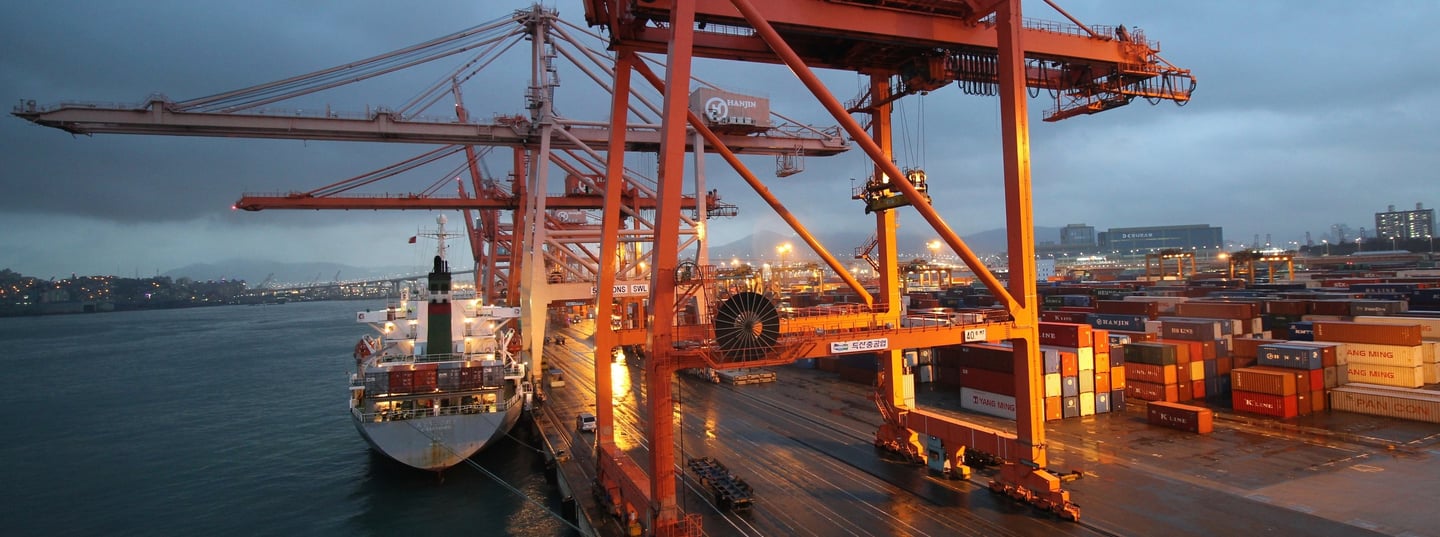

Technical Specifications
Article Numbers and Core Configurations
The H05VVH6-F Crane F flat cable series offers a comprehensive range of core configurations to meet diverse application requirements. Standard configurations include options ranging from 4-core to 24-core assemblies, with various combinations of power and control conductors. Each configuration is identified by a specific article number that designates the exact core count, conductor sizes, and cable dimensions.
Typical core configurations include 4G2.5 (4-core with 2.5mm² conductors), 7G1.5 (7-core with 1.5mm² conductors), and 12G2.5 (12-core with 2.5mm² conductors), among others. The "G" designation indicates that the cable includes a protective earth conductor, which is essential for safe operation in industrial applications.
Conductor Sizes and Cross-Sections
The conductor sizes in H05VVH6-F Crane F flat cables are carefully selected to provide appropriate current-carrying capacity while maintaining cable flexibility and minimizing overall dimensions. Standard conductor cross-sections range from 0.75mm² for control circuits to 6.0mm² for power applications, with 1.5mm² and 2.5mm² being the most common sizes for general-purpose applications.
For example, a typical 12G2.5 configuration with outer dimensions of 42.0×9.5 mm provides twelve 2.5mm² conductors in a compact flat profile. The copper index, which indicates the total copper content per kilometer of cable, varies depending on the specific configuration and conductor sizes used.
Outer Dimensions (Width x Height)
The flat profile dimensions of H05VVH6-F Crane F cables are optimized to provide maximum space efficiency while maintaining adequate conductor separation and insulation thickness. Typical outer dimensions range from 26.0×9.0 mm for smaller configurations to 63.0×19.0 mm for larger multi-core assemblies.
These dimensions are carefully engineered to ensure proper cable performance while minimizing the space required for cable routing and support systems. The relatively thin profile compared to equivalent round cables allows for more efficient use of cable trays, trolley systems, and conduit installations.
Copper Index and Cable Weight
The copper index represents the total mass of copper conductors per kilometer of cable and is an important specification for both electrical performance calculations and cost estimation purposes. Typical copper indices for H05VVH6-F Crane F flat cables range from approximately 180 kg/km for smaller configurations to over 600 kg/km for larger multi-core assemblies.
Cable weight is another critical specification, particularly for mobile applications where the weight of the cable itself can impact system performance and energy consumption. Total cable weights typically range from 400 kg/km for compact configurations to over 1,200 kg/km for heavy-duty multi-core assemblies.
Standard Lengths and Packaging Options
H05VVH6-F Crane F flat cables are available in standard lengths designed to meet common installation requirements while minimizing waste and inventory costs. Standard packaging options include coils for shorter lengths (typically up to 250 meters or 30 kg) and drums for longer continuous lengths up to 500 meters or more.
The choice of packaging depends on the specific installation requirements, with coils being preferred for smaller installations where easy handling is important, and drums being used for longer continuous runs where minimizing joints is critical. Custom lengths and packaging configurations are typically available upon request to meet specific project requirements.
Application Range
Crane Systems on Building Sites and Shipyards
Construction sites and shipyards represent some of the most demanding environments for electrical cables, with exposure to weather, mechanical stress, chemicals, and extreme operating conditions. H05VVH6-F Crane F flat cables are specifically designed to excel in these challenging applications, providing reliable power and control for mobile cranes, tower cranes, and material handling equipment.
The weather-resistant properties of these cables ensure consistent performance despite exposure to rain, snow, UV radiation, and temperature extremes commonly encountered in outdoor construction environments. The flat profile allows for efficient installation in cable trolley systems that follow crane movement, while the superior flexibility ensures reliable operation even when cables are subjected to continuous bending and flexing during crane operations.
Cable Trolley Systems for Elevators
Modern elevator systems increasingly rely on cable trolley configurations to provide power and control signals to moving elevator cars. H05VVH6-F Crane F flat cables are ideally suited for these applications due to their compact profile, excellent flexibility, and reliable performance in continuous flexing applications.
The flat cable design allows for efficient bundling of multiple circuits within the limited space available in elevator shafts, while the weather-resistant properties provide protection against moisture and temperature variations that can occur in these environments. The superior low-temperature flexibility ensures reliable operation in unheated elevator shafts during winter conditions.
Sewage Treatment Plants
Sewage treatment facilities present unique challenges for electrical cables, including exposure to corrosive gases, high humidity, temperature variations, and potentially explosive atmospheres. H05VVH6-F Crane F flat cables provide excellent resistance to these harsh conditions, making them ideal for powering and controlling equipment such as bridge cranes, traveling screens, and material handling systems in wastewater treatment applications.
The weather-resistant rubber jacket provides protection against chemical vapors and moisture, while the flat profile allows for efficient installation in areas where space is limited. The EMI shielding capabilities help ensure reliable operation of sensitive control systems in environments with high levels of electrical interference from pumps, motors, and variable frequency drives.
Steelworks Operations
Steel production facilities are among the most demanding environments for industrial cables, with extreme temperatures, heavy mechanical loads, electromagnetic interference, and exposure to various chemicals and contaminants. H05VVH6-F Crane F flat cables are engineered to perform reliably in these challenging conditions, providing power and control for overhead cranes, material handling systems, and process equipment.
The high-temperature resistance and mechanical durability of these cables make them suitable for use in areas where conventional cables would fail prematurely. The flat profile provides advantages in applications where cables must be routed through confined spaces or where multiple circuits must be bundled efficiently.
High Rack Storage Facilities
Automated storage and retrieval systems in high-rack storage facilities require reliable power and control cables that can operate continuously in demanding mechanical environments. H05VVH6-F Crane F flat cables provide the flexibility, durability, and space efficiency required for these applications, where cable failures can result in significant operational disruptions and economic losses.
The compact flat profile allows for efficient cable management in the confined spaces typical of automated storage systems, while the superior flexibility ensures reliable operation despite continuous movement and positioning requirements. The weather-resistant properties provide protection in warehouse environments that may not be climate-controlled.
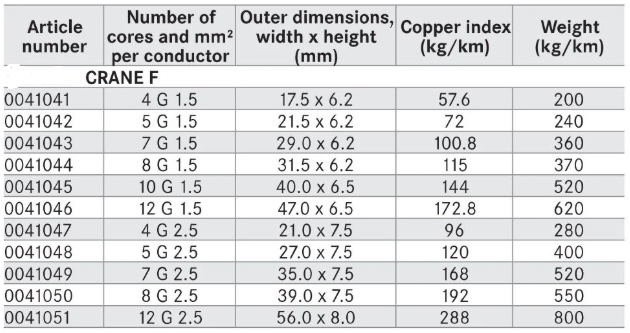

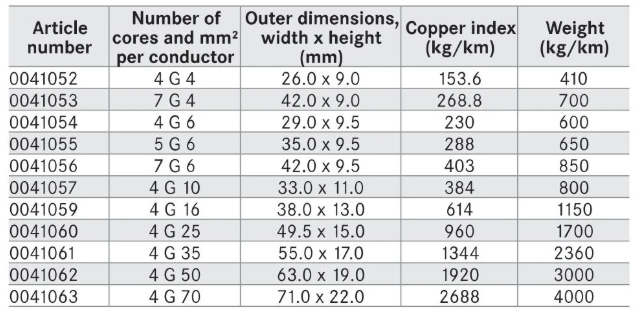

Installation and Handling Guidelines
Fixed vs. Flexible Installations
H05VVH6-F Crane F flat cables can be used in both fixed installations and flexible applications, with specific installation techniques and considerations for each type of application. In fixed installations, the cables are permanently routed and secured, while in flexible applications, the cables must accommodate continuous movement and positioning changes.
For fixed installations, standard cable support and routing practices apply, with attention to proper cable support intervals and protection from mechanical damage. In flexible applications, special consideration must be given to bend radius limitations, cable support systems, and protection from abrasion and mechanical stress.
Minimum Bending Radii Recommendations
The flat profile of H05VVH6-F Crane F cables allows for smaller bending radii compared to equivalent round cables, providing advantages in applications where space is limited. However, proper bending radius limits must still be observed to ensure cable longevity and performance reliability.
Minimum bending radii typically range from 4 times the cable width for stationary installations to 8 times the cable width for applications involving continuous flexing. These specifications may vary depending on the specific cable configuration and environmental conditions, and manufacturer recommendations should always be followed.
Temperature and Environmental Considerations
Proper installation of H05VVH6-F Crane F flat cables requires consideration of the operating temperature range, environmental conditions, and potential exposure to chemicals or other contaminants. The cables should be installed using appropriate support systems and protective measures to ensure optimal performance and longevity.
Temperature considerations include both the ambient operating temperature and any heat generated by current flow through the cable conductors. Proper derating calculations should be performed for installations in high-temperature environments or where multiple cables are bundled together, which can affect heat dissipation and current-carrying capacity.


Compliance and Certifications
International Standards (e.g., VDE, IEC)
H05VVH6-F Crane F flat cables are manufactured in compliance with relevant international standards that ensure safety, performance, and compatibility with electrical systems worldwide. The H05VVH6-F designation indicates compliance with harmonized European standards for flexible cables, while additional certifications may be available for specific markets and applications.
Key standards include IEC 60245 for rubber insulated cables, VDE 0281 for German electrical safety requirements, and various national standards for specific countries and applications. These certifications ensure that the cables meet stringent requirements for electrical performance, mechanical properties, and safety characteristics.
Safety and Performance Certifications
In addition to basic electrical standards compliance, H05VVH6-F Crane F flat cables may carry additional certifications for specific applications or environments. These may include approvals for use in potentially explosive atmospheres, marine applications, or other specialized environments where additional safety requirements apply.
Performance certifications may also include flame retardancy ratings, low smoke and halogen-free properties, or other characteristics that are important for specific applications. Users should verify that the selected cable configuration carries the appropriate certifications for their specific application requirements.
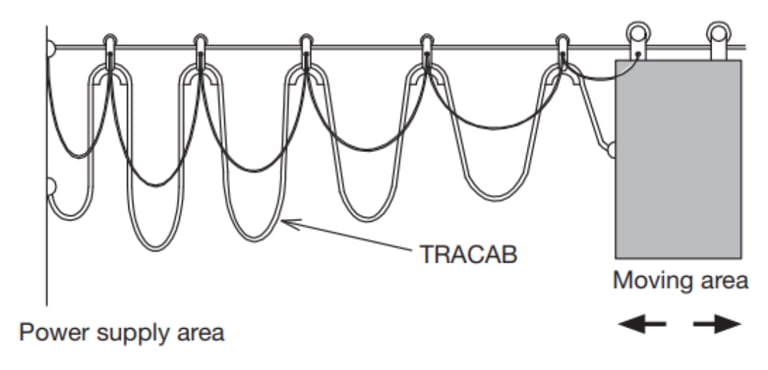

Maintenance and Lifecycle
Inspection Intervals
Regular inspection and maintenance of H05VVH6-F Crane F flat cables is essential to ensure continued safe and reliable operation throughout their service life. Inspection intervals should be established based on the specific application, environmental conditions, and duty cycle, with more frequent inspections required for applications involving continuous movement or harsh environmental conditions.
Typical inspection procedures include visual examination of the cable jacket for signs of wear, cracking, or damage, electrical testing to verify insulation integrity and conductor continuity, and mechanical testing of support systems and connections. Any signs of deterioration should be addressed promptly to prevent failures that could result in system downtime or safety hazards.
Repair and Replacement Procedures
When cable damage or deterioration is detected, prompt repair or replacement is essential to maintain system safety and reliability. H05VVH6-F Crane F flat cables are typically designed for replacement rather than field repair, as the specialized construction and materials make field repairs difficult and potentially unreliable.
Replacement procedures should follow manufacturer recommendations and applicable electrical codes, with attention to proper cable routing, support, and termination techniques. In critical applications, consideration should be given to maintaining spare cable inventory to minimize downtime in the event of cable failure.
Conclusion
Summary of Benefits
H05VVH6-F Crane F flat cables represent a superior solution for demanding industrial applications requiring weather-resistant, flexible power and control cables. The combination of flat profile design, weather-resistant rubber construction, superior low-temperature flexibility, and EMI shielding capabilities makes these cables ideally suited for crane systems, cable trolley applications, and harsh industrial environments.
Key benefits include reduced space requirements compared to round cables, improved reliability in harsh environmental conditions, enhanced flexibility for dynamic applications, and integrated power and control functionality that simplifies system design and installation. These advantages translate to reduced installation costs, improved system reliability, and lower long-term maintenance requirements.
Ideal Use Cases and ROI Considerations
The ideal use cases for H05VVH6-F Crane F flat cables include outdoor crane systems, cable trolley installations, elevator applications, and material handling systems operating in harsh industrial environments. The return on investment for these specialized cables comes primarily from reduced maintenance costs, improved system uptime, and enhanced operational reliability compared to conventional cable solutions.
When evaluating the cost-effectiveness of H05VVH6-F Crane F flat cables, consideration should be given to the total cost of ownership, including initial purchase price, installation costs, maintenance requirements, and the cost of system downtime. In most demanding applications, the superior performance and reliability of these specialized cables provide a compelling economic advantage over conventional alternatives.
Frequently Asked Questions
Q: What is the maximum operating temperature for H05VVH6-F Crane F flat cables?
A: These cables typically operate reliably in temperatures ranging from -25°C to +70°C, making them suitable for most outdoor industrial applications. The weather-resistant rubber jacket maintains its flexibility and protective properties throughout this temperature range.
Q: Can these cables be used in wet or underwater applications?
A: While H05VVH6-F Crane F flat cables offer excellent weather resistance and can withstand exposure to rain and moisture, they are not designed for continuous underwater immersion. For underwater applications, specialized submarine cables with appropriate sealing and insulation should be used.
Q: How do I determine the correct cable configuration for my application?
A: Cable selection should be based on the required current-carrying capacity, number of control circuits, environmental conditions, and mechanical requirements. Consultation with a qualified electrical engineer and the cable manufacturer is recommended to ensure optimal cable selection for specific applications.
Q: What is the expected service life of these cables?
A: With proper installation and maintenance, H05VVH6-F Crane F flat cables can provide reliable service for 10-20 years or more, depending on the application severity and environmental conditions. Regular inspection and preventive maintenance are essential to achieve maximum service life.
Q: Are these cables available with special properties like flame retardancy or low smoke emission?
A: Various specialty configurations may be available depending on specific requirements. Options may include flame retardant formulations, low smoke and halogen-free compounds, or other specialized properties. Consult with the manufacturer regarding availability of specific configurations for your application.
How to Reach Us
Get in Touch
SiteMap
Product Catalogue
Reeling Cable
Festoon Cable
Shore Power Cable




Scan to add us on WeChat
